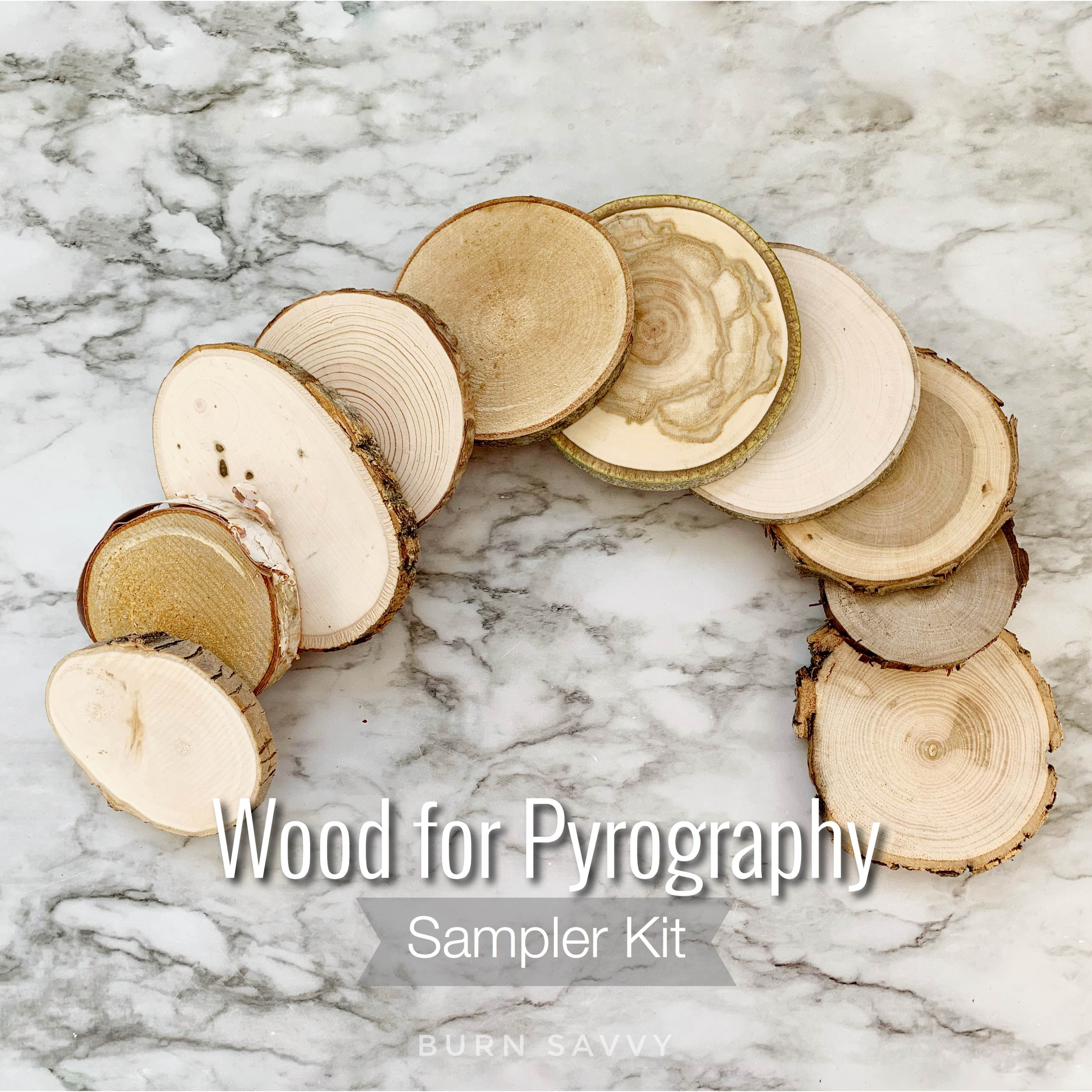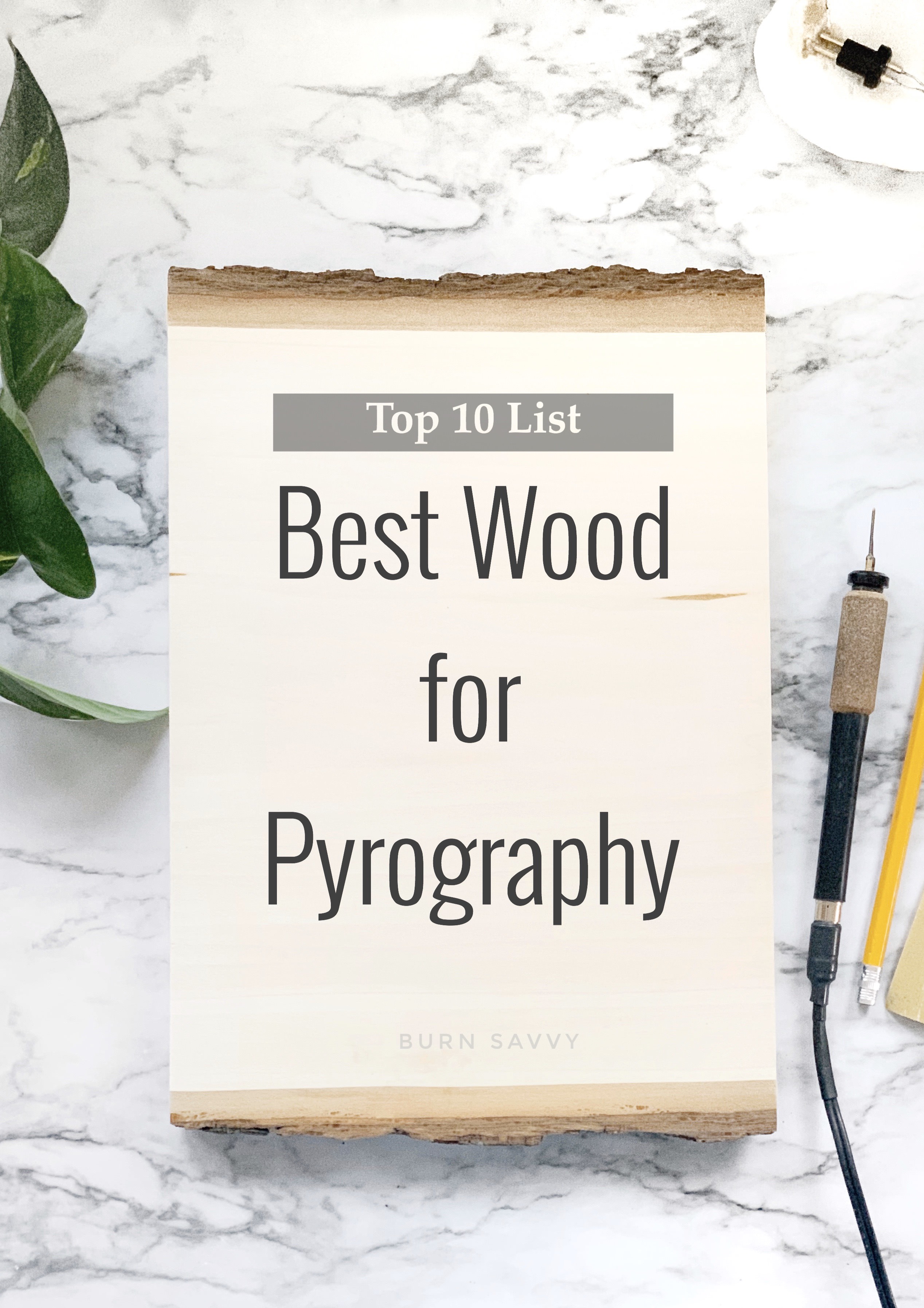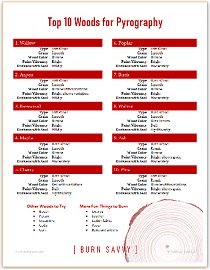How To Choose Wood for Wood burning Art:
5 Things You Need to Know
How do you choose the best wood for wood burning art? Sure, seasoned pyrographers have their favorites - but what if you want to try something different?
Here are 5 things you should know when choosing the best wood for your pyrography art.
Want To Learn How To Wood Burn?
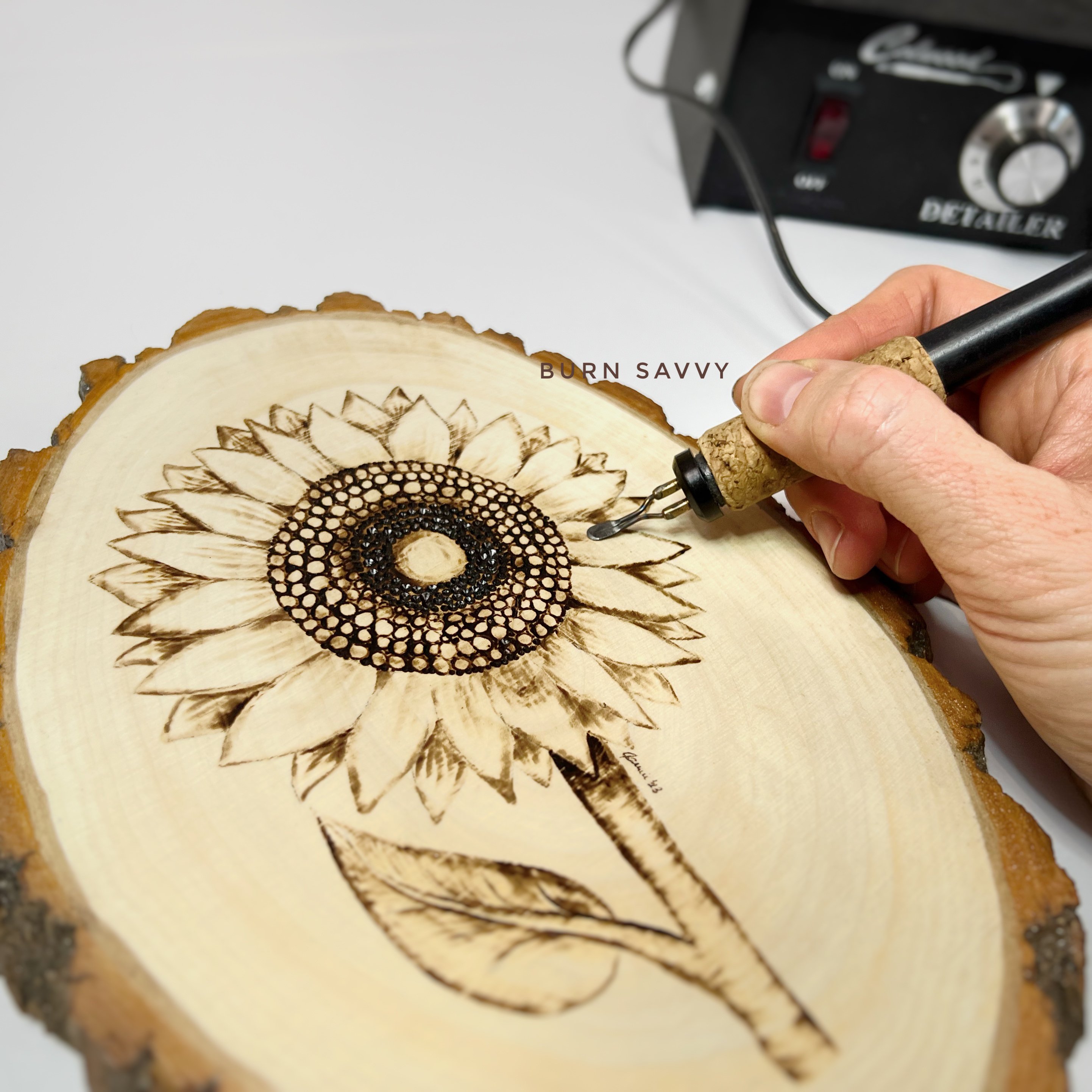
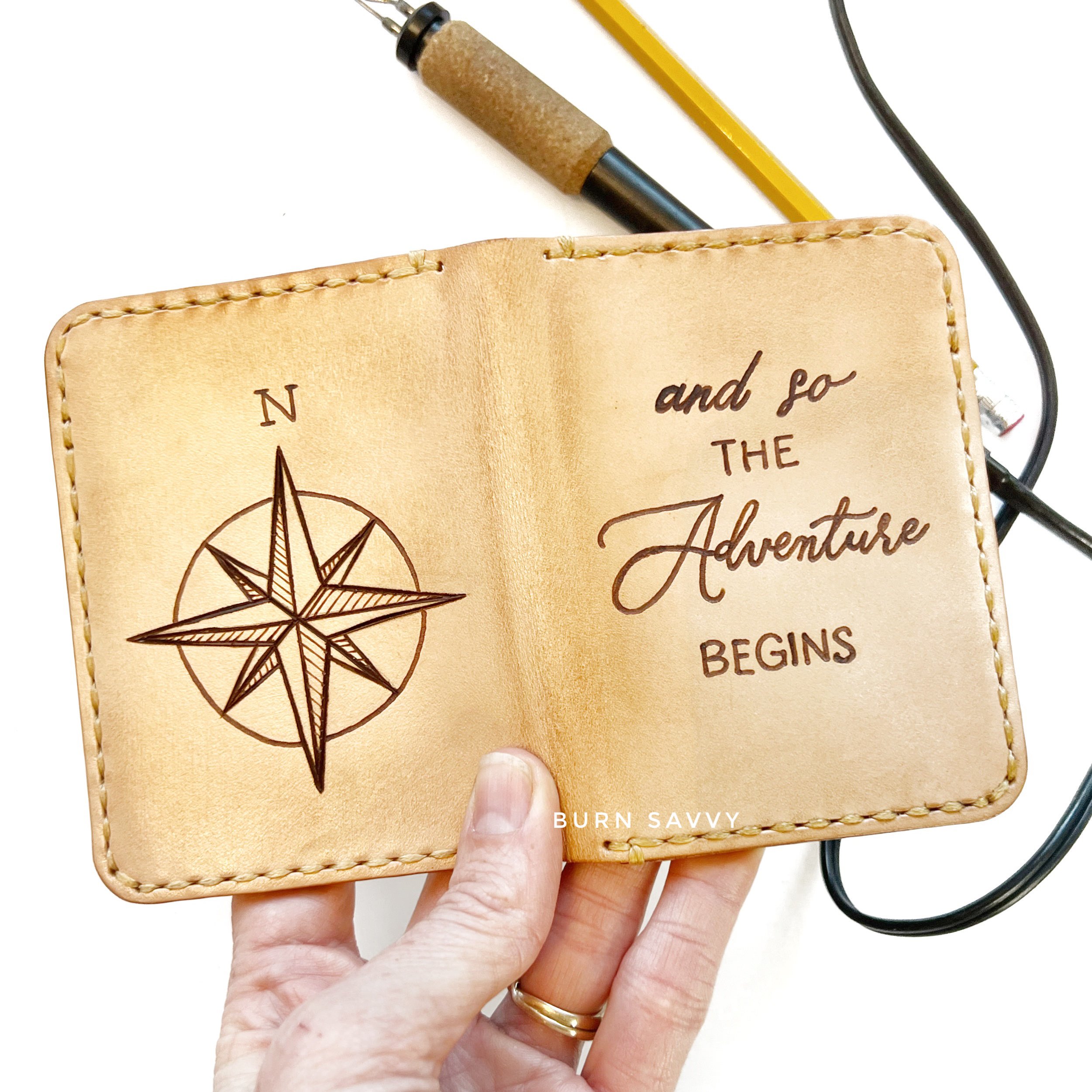

Courses are now available on the Burn Savvy YouTube channel membership!
Go see which level suits YOU best. ⇣
Wanna Try The Top 10 Most Popular Woods for Yourself?
I made a woodburning kit for you
1. Check Wood Toxicity
Did you know there were toxic woods? [Read this: Your DO NOT BURN List]
Some woods might be okay to burn here and there. But in large quantities or over a long period of time, certain woods are known to cause long term lung damage, even cancer.
All the pyrography books say to "check wood toxicity" before you use that wood for wood burning art.
How the devil do you do that??
I'll show you.
Start by asking mother Google. She knows all (or maybe she's just a know-it-all, heh heh).
Ask Google:
Is [_This_] Wood Toxic?
Start with this simple search and see what shows up.
For example...
I tried this basic search: "is maple wood toxic?" Apparently, it's toxic for horses. But nothing big in the search came up for humans.
Ask Google:
Is it safe to Burn [_This_] Wood?
This is going to mostly bring back results about burning wood in your fireplace, woodburning stove, or outdoor fire pit.
That's okay.
If it is NOT safe for your fireplace, it's probably NOT a safe wood for wood burning art either.
If it IS safe in the fireplace, there's a good chance it IS a safe wood for wood burning art too.
Check Wood Toxicity Tables
You want to see if the wood has common, bad reactions - specifically for dust, bark, oil and sap since that's what we pyrography artists deal with most.
Breathing in any wood dust is bad for you (wear a mask my friend) but some woods are more irritating than others. Some bark has common allergens and irritants, and sap and oil can create toxic fumes when burned.
Here is a good chart to check for wood toxicity and another article explaining other dangers that could make a wood toxic.
But there are more. I recommend looking at several.
Watch Yourself!
Just because a wood isn't on the do-not-burn list and passes the text on toxicity tables doesn't mean it's always safe.
Some people are more sensitive or allergy-prone.
What works amazingly for thousands of people could be extremely dangerous for you.
When trying new wood, try it out in small doses. Burn a small piece. Then burn a larger piece.
Notice if you get light headed, dizzy, headaches, or allergy symptoms overtime. If those things show up, choose a different wood.
2. Soft Vs Hard
The terms "hardwood" and "softwood" can be deceiving.
Woods are technically classified as "hardwood" or "softwood" based on their dropping leaves or evergreen-ness...
...I don't know why they do that.
It means nothings as to the *actual* hardness or softness of the wood or how they burn. I'll tell you as we go which woods are actually soft or hard.
3. Grain
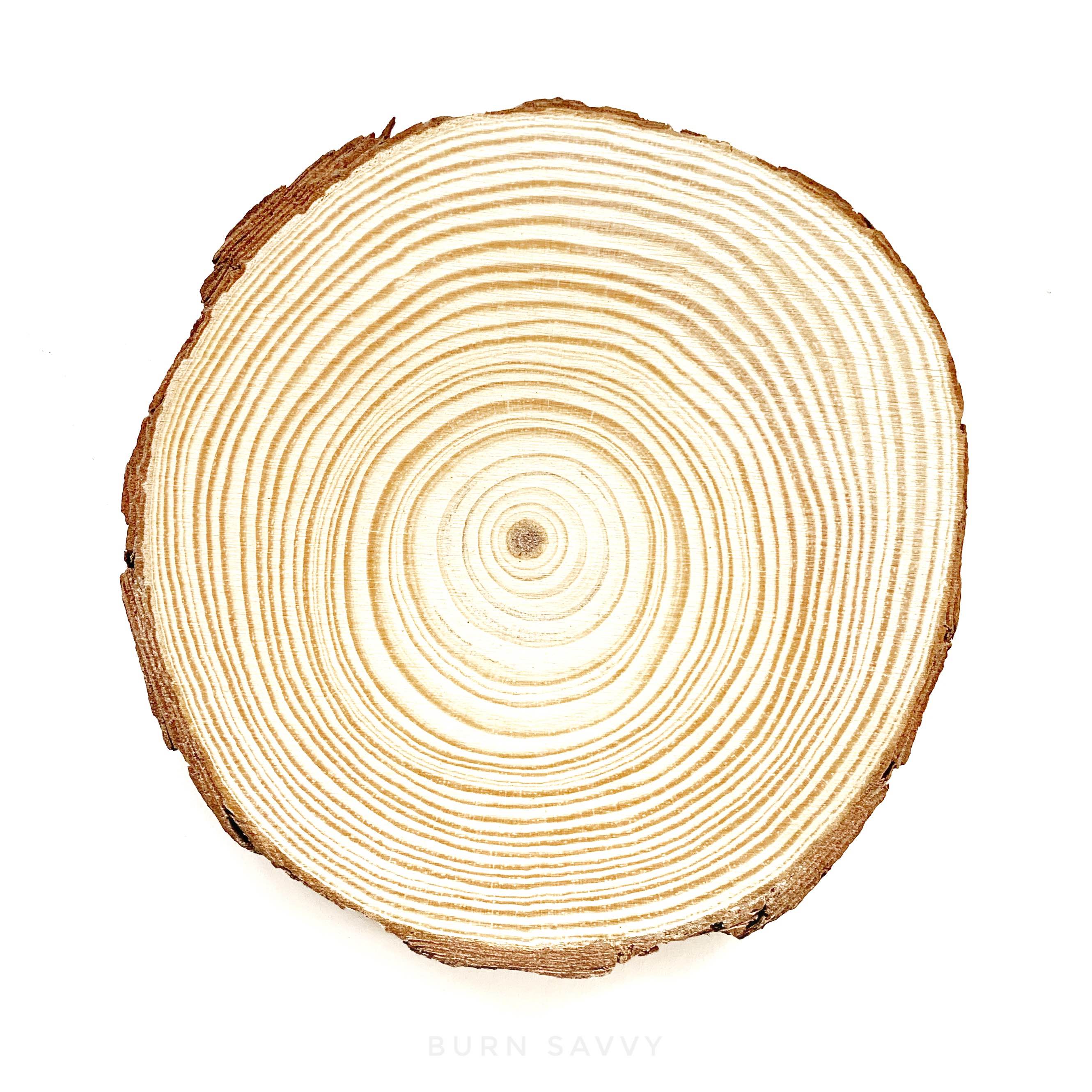
This is a biggie.
If the grain is rough, that means the wood varies from hard to soft with every tree ring. This can make the burn look weird and you'll have to go back in to touch up the harder ring or vein areas.
A smooth grain is best. You tend to have less "touchups" to do after you burn.
Translation:
Smooth Grain = Faster, Smoother Burns.
Rough Grain = More Time, More Patience, More Irritating.
4. Color
Dark woods don't show the lighter burns well. Blonde woods do. Then you have woods with all kinds of varying color.
All of these colors can be fun to experiment with. It just depends on you.
You have to decide if you like a "clean" blank canvas to work with, or if you like incorporating unique colors or changes of color into your finished piece.
5. Slices VS Slabs
As a general rule, wood slabs are easier to burn that wood slices.
What's the difference?
The cut.
A horizontal cut of a tree makes a round wood slice, also known as a "wood cookie" (that actually IS the technical term lol). If it's completely raw, it will come in a circular-ish shape, show all the tree rings, and probably still have the bark all the way around it.
Since this is cut against the grain of the wood, slices tend to be tougher wood for wood burning art.
A vertical cut of the tree follows the wood grain up and down the tree. Since slabs are cut along the grain instead of against it, they show less tree rings or veins of grain and tend to be easier to burn.
If they're live edge pieces (meaning they still have the bark on them) the bark will line 2 out of 4 sides.
So regardless of what wood you buy, just know that the way it's cut makes a difference in how it burns.
WanNA see the top 10 most popular kinds of wood for wood burning art?
Want to seriously up your pyrography game?
I'm spilling my pyrography secrets. Don't miss out on...
- Your FREE guide to woodburning tips & their uses
- Helpful tips, hacks & articles
- First dibs on upcoming courses
- Notice of retreats, challenges, and other pyrography events
- and so much more coming!
So go ahead. Subscribe. Consume. Enjoy.
You deserve it.
⇣ Enjoying your FREE pyrography tips & techinques? ⇣
I am delighted you find them helpful!
If you want some easy ways to give back, here are some ideas that also help YOU level up YOUR wood burning game...
- Watch my YouTube videos (that's totally FREE).
- Buy your woodburning products through my affiliate links which throw me a dime or two at zero extra cost to you (read about affiliate links here).
- Take the pyrography courses that I've poured my heart and soul into helping you burn like a boss!
- Join in the woodburning retreats - that's really like giving back to yourself, actually. ;)
Thanks for helping me keep creating free, delightful, and helpful woodburning content for YOU and pyros like you.
